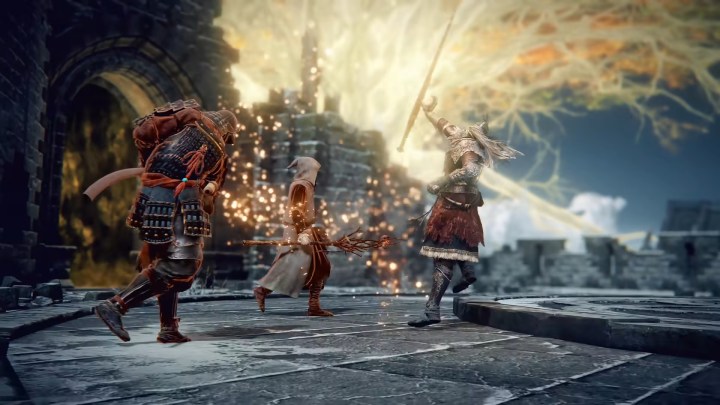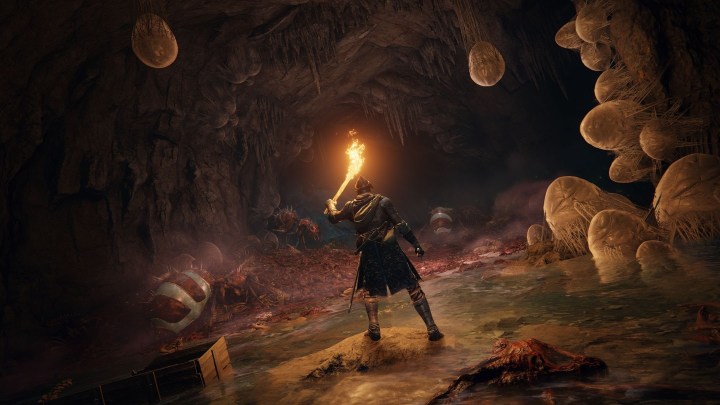Elden Ring is an early hit for 2022, at least on consoles. The game just passed the Mostly Positive mark on Steam after being review bombed on release day for poor performance. The PC port, as is typical of From Software, has some problems. To get the most out of it, we ran a range of Elden Ring benchmarks to find the best settings.
The game still has some performance problems, and it calls for a recent PC. With a few settings optimizations, though, you can get Elden Ring looking how you want while still hitting the frame rate cap.
The best settings for Elden Ring

After testing all of the settings individually, here are the best settings for
- Texture quality: Medium
- Antialiasing quality: Low
- SSAO: Medium
- Depth of field: Off
- Motion blur: Off
- Shadow quality: High
- Lighting quality: Medium
- Effects quality: Medium
- Volumetric quality: High
- Reflection quality: High
- Water surface quality: Low
- Shadow quality: Medium
- Global illumination quality: High
- Grass quality: High
We’re handling
There should eventually be a mod that disables the cap, as has been the case with Sekiro: Shadows Die Twice and Dark Souls 3. These unofficial mods aren’t easy to drum up, though. From Software games usually have physics and other things tied to the frame rate, so uncapping will probably break the game.
Instead of platonic performance, we put together a PC using midrange parts from a few years ago — a Ryzen 7 1700X, an 8GB RX 580, and 16GB of RAM. This is actually below From Software’s recommended spec, but we were still able to manage a playable frame rate at 1440p with setting tweaks and a full 60 fps at 1080p with the Medium preset.
The two biggest wins are depth of field and motion blur. You should turn both of them off. They don’t look great, and they both have a performance impact. It’s possible they’re causing stuttering in the game, too, so leave them off.

Otherwise, basically every option will increase your performance. There aren’t too many free settings. We compromised and left shadow, reflection, global illumination, and volumetric quality at high, just for visual purposes. If you’re looking for extra performance, pay attention to the batch of settings from shadow to reflection quality. Those are the most important.
At 1440p, we went from an average of 29 fps at the Maximum preset to 37 fps with my optimized settings. Not bad. To be clear, you shouldn’t play
Elden Ring system requirements

| Minimum | Recommended | |
| CPU | AMD Ryzen 3 3300X Intel Core i5-8400 |
AMD Ryzen 5 3600X Intel Core i7-8700K |
| GPU | AMD Radeon RX 580 4GB Nvidia GeForce GTX 1060 3GB |
AMD Radeon RX Vega 56 8GB Nvidia GeForce GTX 1070 8GB |
| RAM | 12GB | 16GB |
| Storage | 60GB | 60GB |
| OS | Windows 10 or 11 | Windows 10 or 11 |
The CPU requirements are most interesting. We don’t usually see games call for such recent processors. Even the PC port of God of War only calls for an Intel Core i5-2500K, which is six generations behind the Core i5-8400. The issue seems to be how many threads older generations of Intel processors have.
Older Intel i5 processors don’t have hyperthreading, and the Core i5-8400 is the first Intel i5 model with six cores. The Ryzen 3 3300X only has four cores, but it has hyperthreading, offering up a total of eight threads. All of this is to say: Don’t believe the system requirements. Based on our testing, it’s more important that you have at least six threads than you have a processor from the last few generations.
The CPU requirements are too high, and the GPU requirements are too low. Even with an 8GB RX 580, we were struggling to hit 60 fps at 1080p. The 4GB model would run into more issues.
Elden Ring PC benchmarks, tested

For
The presets scale well, and if you want an easy win, jumping to the Medium preset results in a 40% performance improvement. Our optimized settings are less of an improvement — around 31% over the Maximum preset — but it includes quite a few more settings at High.
In addition to the RX 580, we tested
The good news from the results is that you have plenty of bandwidth to reach 60 fps. There are some settings that destroy image quality — shadow quality and SSAO, in particular. If you cut in some other areas, though, you can hit the cap at the resolution meant for your graphics card.
Outside of the average frame rate, we also included the 1% lows for reference. This is an average of the lowest 1% of frames, and it’s a good indicator of performance consistency. There are some big gaps with
We noted the 0.1% lows in the benchmarks — an average of an even smaller set of frames — and almost all of the results were in the single digits.
A note on PC performance

At the time of publication,
The issue comes down to shader compilation and loading zones. Basically, the game has what some call a just-in-time (JIT) rendering system. The problem right now is that it’s not quite in time, resulting in stutters as the engine loads a new zone or streams in new assets. There’s no way around this problem right now, so don’t look to performance optimizations to fix it.
There’s also an issue with the game that will cause it to bypass your
Editors' Recommendations
- 9 best processors for PC gaming: tested and reviewed
- Best gaming PC deals: Lenovo Legion, ASUS ROG, Acer Predator
- The 6 best VR headsets for PC in 2024
- PS5 vs. PC: Which is the better buy for gaming in 2024?
- Helldivers 2 PC performance: best settings, performance, crashing





